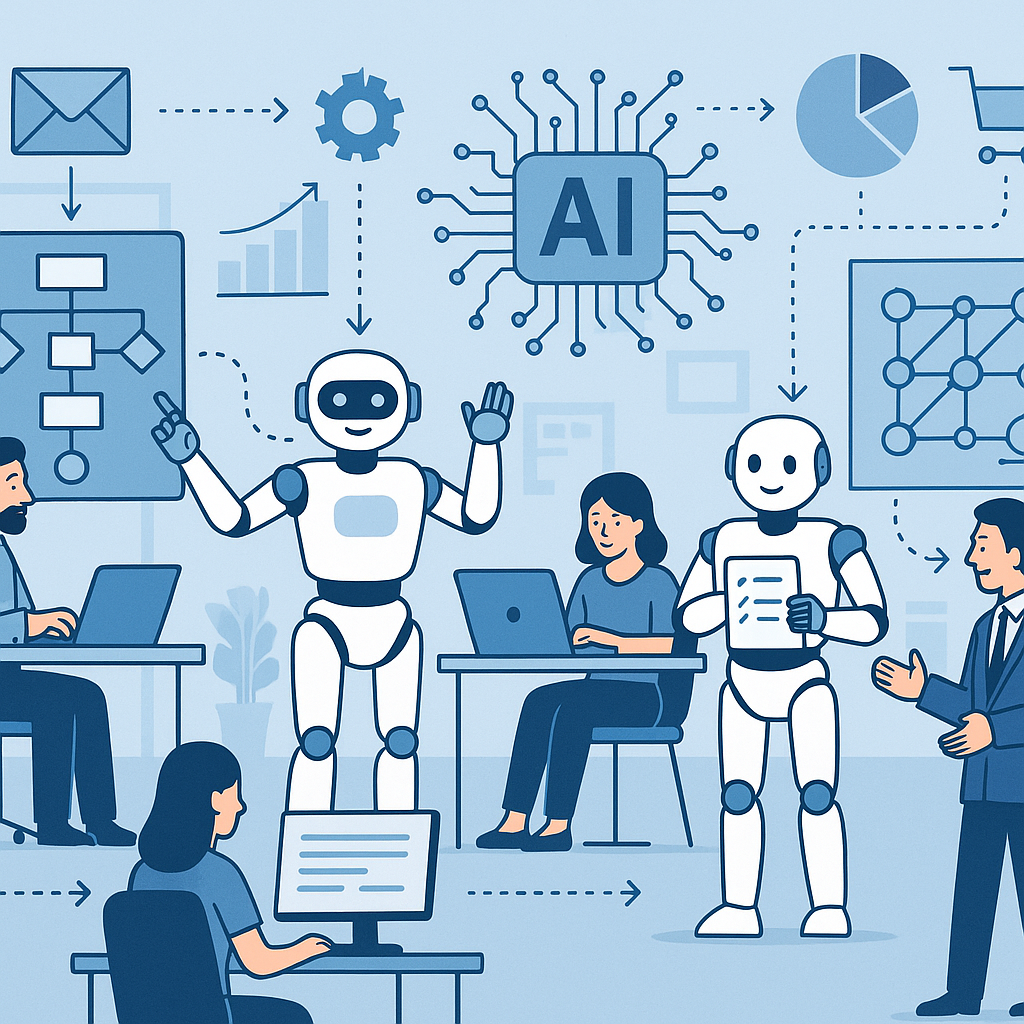Unleashing Hyperautomation: How Enterprises Accelerated Efficiency in 2022

Hyperautomation became an essential business theme in 2022, quickly moving from analyst hype to a practical strategy reshaping operational efficiency. With organizations seeking to do more with less, the convergence of Robotic Process Automation (RPA), intelligent workflows, and artificial intelligence (AI) offered a roadmap for rapid digital transformation.
What Is Hyperautomation—And Why Did It Matter in 2022?
Gartner first spotlighted "hyperautomation" as a top trend for enterprise technology. Unlike traditional automation, which focused on specific repetitive tasks, hyperautomation is about connecting advanced tools—think RPA, AI, low-code/no-code platforms, process mining, and machine learning—to automate entire end-to-end business processes.
Key reasons hyperautomation attracted so much attention in 2022:
- The lingering impact of the pandemic required businesses to accelerate digital operations.
- The shortage of skilled labor and rising costs squeezed margins.
- Cloud adoption and maturing AI tools made advanced automation accessible to more companies.
The Building Blocks of Hyperautomation
The promise of hyperautomation lies in how well its components work together. In 2022, successful enterprises prioritized three layers:
- RPA (Robotic Process Automation): Automates repetitive, rule-based tasks across legacy and modern systems.
- AI and ML: Powers advanced decision-making, from intelligent document understanding to predictive analytics.
- Process & Task Mining: Identifies bottlenecks, maps process flows, and highlights automation opportunities for maximum ROI.
Example: Finance teams used hyperautomation to streamline invoice processing—combining RPA bots for data entry with AI models to classify and validate invoices, all orchestrated for minimal manual intervention.
Key Use Cases Capturing the Spotlight
Enterprises adopted hyperautomation in a variety of ways, but the most impactful early wins included:
- Procure-to-Pay (P2P): Automating vendor onboarding, invoice handling, matching, and payment approvals, reducing cycle times and errors.
- Customer Support: Integrating AI-powered chatbots with backend RPA bots for faster, more consistent service.
- Compliance & Audit: Automatically gathering data across disparate systems and flagging potential risks or anomalies.
Pitfalls and Lessons Learned
Hyperautomation isn’t just about stringing together digital tools. In 2022, leaders who succeeded avoided common traps like:
- Over-automating without rethinking broken processes
- Underinvesting in change management and upskilling
- Neglecting ongoing process governance and metrics
Case in point: A major insurer achieved 42% cost savings by hyperautomating claims intake, but only after redesigning workflows—not just patching outdated processes with bots.
The Road Ahead: What Decision-Makers Considered Next
As the initial hype wave of hyperautomation crested in 2022, thoughtful executives asked:
- How do we scale automation without increasing risk?
- Which processes are next—based on data, not gut instinct?
- How do we build a blended workforce where bots empower, not displace, employees?
Adopting hyperautomation was less about chasing the next shiny tool and more about envisioning a digitally-enabled operating model—one poised for agility and future disruption.
Conclusion: From Hype to Habit
Hyperautomation became a boardroom priority because it delivered fast, tangible value across industries in 2022. Organizations that succeeded started small, measured outcomes, and treated automation as a continuous journey—not a one-off project.
Want to explore hyperautomation for your business? Start by mapping your process landscape and identifying automation-ready workflows—where the impact will be immediate and measurable.
2022